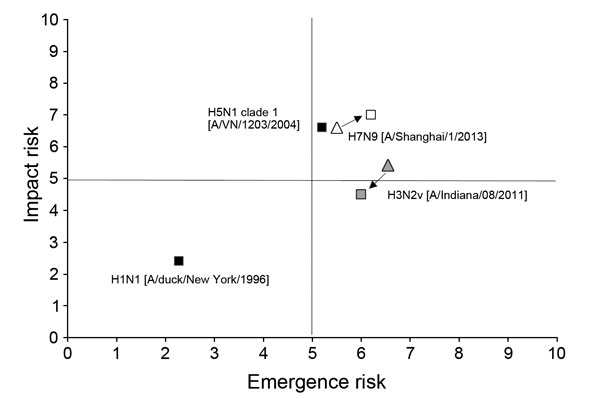Volume 21, Number 8—August 2015
Research
Development of Framework for Assessing Influenza Virus Pandemic Risk
Figure 2

Figure 2. Influenza Risk Assessment Tool scores for 4 influenza viruses on the basis of potential risk to achieve “sustained human-to-human transmission” (emergence) and potential risk “for significant impact on public health” (impact). Black squares in top right quadrant and lower left quadrant represent risk scores for H5N1 clade 1 and H1N1, respectively. White triangle represents risk score for H7N9 in mid-April 2013; white square represents risk score for the same virus in mid-May 2013. Gray triangle represents risk score for H3N2v as of December 2011; gray square represents risk score for same virus in December 2012. Emergence risk is the risk summary score for the question, “What is the risk that a virus not currently circulating in the human population has the potential for sustained human-to-human transmission?” Impact risk is the risk summary score for the question, “If the virus were to achieve sustained human-to-human transmission, what is the risk that a virus not currently circulating in the human population has the potential for significant impact on public health?”